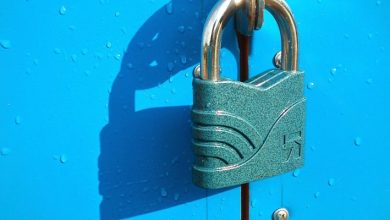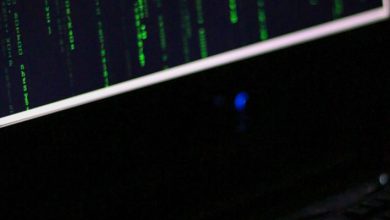How Two-Factor Authentication Can Help Prevent Phishing

- Understanding the Basics of Two-Factor Authentication
- The Rise of Phishing Attacks and How to Combat Them
- Why Passwords Alone Are Not Enough to Protect Your Accounts
- Exploring the Benefits of Two-Factor Authentication for Online Security
- Tips for Implementing Two-Factor Authentication in Your Daily Routine
- Real-Life Examples of Two-Factor Authentication Preventing Phishing Incidents
Understanding the Basics of Two-Factor Authentication
Two-factor authentication (2FA) is a security process that requires users to provide two different authentication factors to verify their identity. This adds an extra layer of security beyond just a username and password, making it more difficult for hackers to gain unauthorized access to accounts.
One common form of 2FA is SMS authentication, where a user enters their password and then receives a one-time code via text message that they must also enter to access their account. Another type of 2FA is app-based authentication, where a user uses a specific app on their phone to generate a code that they must enter along with their password.
By using two different factors for authentication, 2FA helps prevent phishing attacks because even if a hacker manages to obtain a user’s password, they would still need the second factor (such as a code sent to the user’s phone) to access the account. This significantly reduces the risk of unauthorized access.
The Rise of Phishing Attacks and How to Combat Them
Phishing attacks have been on the rise in recent years, posing a significant threat to individuals and organizations alike. These attacks involve cybercriminals posing as legitimate entities to trick unsuspecting victims into providing sensitive information such as passwords, credit card numbers, or personal data.
One of the most common methods used in phishing attacks is email spoofing, where attackers send emails that appear to be from a trusted source, such as a bank or online service provider. These emails often contain links to fake websites that mimic the look and feel of the legitimate site, prompting users to enter their login credentials.
Fortunately, two-factor authentication (2FA) can help prevent phishing attacks by adding an extra layer of security to the login process. With 2FA, users are required to provide two forms of identification before gaining access to their accounts, typically a password and a unique code sent to their mobile device.
By implementing two-factor authentication, organizations can significantly reduce the risk of falling victim to phishing attacks. Even if a cybercriminal manages to obtain a user’s password through a phishing scam, they would still need access to the user’s mobile device to complete the login process, making it much more difficult for them to compromise the account.
Why Passwords Alone Are Not Enough to Protect Your Accounts
Using passwords as the sole method of protecting your accounts is no longer enough in today’s increasingly sophisticated cyber landscape. Hackers have developed advanced techniques to steal passwords through phishing attacks, where they trick users into revealing their login credentials through convincing emails or websites.
These phishing attacks are becoming more common and harder to detect, making it easier for hackers to gain unauthorized access to your accounts. Even if you have a strong and unique password, it can still be compromised through these tactics.
That’s where two-factor authentication (2FA) comes in. By adding an extra layer of security beyond just a password, 2FA makes it much harder for hackers to gain access to your accounts, even if they have your password. This additional step usually involves receiving a code on your phone or email that you must enter after entering your password, further verifying your identity.
Exploring the Benefits of Two-Factor Authentication for Online Security
Implementing two-factor authentication (2FA) for online security offers a multitude of benefits for preventing phishing attacks. By requiring users to provide two different forms of identification before gaining access to their accounts, 2FA adds an extra layer of protection against unauthorized access. This significantly reduces the risk of falling victim to phishing scams, where cybercriminals attempt to trick individuals into revealing sensitive information such as passwords or credit card details.
One of the key advantages of 2FA is that even if a hacker manages to obtain a user’s password through a phishing attack, they would still need the second factor (such as a temporary code sent to a mobile device) to successfully access the account. This additional step acts as a barrier to malicious actors, making it much harder for them to compromise accounts and steal personal information.
Furthermore, 2FA can help organizations protect their sensitive data and confidential information. By requiring employees to use 2FA when accessing company systems or networks, businesses can ensure that only authorized personnel are able to log in securely. This can be especially crucial in industries where data privacy and security are of utmost importance, such as healthcare, finance, or government sectors.
In addition to enhancing security, 2FA can also increase user trust and confidence in online platforms. Knowing that their accounts are better protected against phishing attempts and unauthorized access can improve user experience and satisfaction. This can lead to higher customer retention rates and a positive reputation for the organization implementing 2FA.
Tips for Implementing Two-Factor Authentication in Your Daily Routine
Implementing two-factor authentication in your daily routine is essential for enhancing the security of your online accounts. Here are some tips to help you seamlessly integrate this extra layer of protection:
- Choose reputable two-factor authentication methods to ensure the reliability of your security measures.
- Enable two-factor authentication for all your online accounts, including email, social media, and banking platforms.
- Regularly update your two-factor authentication settings to stay ahead of any potential security threats.
- Use a variety of two-factor authentication methods, such as SMS codes, authenticator apps, or security keys, to diversify your protection.
- Keep your two-factor authentication codes secure and confidential to prevent unauthorized access to your accounts.
By following these tips, you can effectively incorporate two-factor authentication into your daily routine and significantly reduce the risk of falling victim to phishing attacks.
Real-Life Examples of Two-Factor Authentication Preventing Phishing Incidents
Two-factor authentication has been proven to be an effective tool in preventing phishing incidents. There are numerous real-life examples where two-factor authentication has thwarted phishing attempts and protected sensitive information.
One such example is a case where an employee of a large company received an email that appeared to be from their IT department requesting login credentials to update their account. The employee, who had two-factor authentication enabled, received a second verification code on their phone when they tried to log in. This additional layer of security prevented the phishing attack, as the hacker was unable to access the account without the verification code.
Another example involves a banking customer who received a text message claiming to be from their bank asking them to confirm their account details by clicking on a link. The customer, who had two-factor authentication set up for their online banking, was prompted to enter a verification code after entering their password. This prevented the phishing attempt, as the hacker was unable to proceed without the code.
These real-life examples demonstrate how two-factor authentication can play a crucial role in preventing phishing incidents. By adding an extra layer of security beyond just a password, users can significantly reduce the risk of falling victim to phishing attacks and safeguard their personal and sensitive information.



